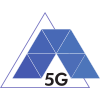
The TRIANGLE Project funded three waves of Open Calls for experimenter. This helped developers and operators to get their devices and applications 5G ready, helped increase the capabilities of the Testbed and provided valuable feedback to the TRIANGLE consortium on the benefits of using the Testbed but also to identify issues and improvements to the Testbed for future users.
Here is a non-exhaustive list of the applicants who used the testbed for 5G testing purposes:
- atSistemas adapted their application in order to assess the performance of the Augmented Reality mobile app 5MARCAS while serving High Quality audio-visual content in real-time.
- D-Cube established the QoE characteristics they were looking to test and then assessed various visual quality levels and production conditions of an immersive game that allows players to compete in shared virtual arenas using their reconstructed realistic appearance as their in-game avatars.
- The Health5G@Home experiment from ThinkIN was aimed at validating the ability of 5G technology to effectively enable the delivery of advanced home health and care services
- The objective of Dual-RoC Experiment from Politecnico Milano was to experimentally observe and demonstrate the feasibility of the interplay between an all-analog C-RAN architecture based on LAN cables and Multi-RAT.
- The 5G-Bot experiment by Infolysis was to test the behaviour of chatbot applications under different mobile reception conditions, network traffic, processing power schemes and battery utilisation plans in order to quantify and assess their impact on the QoE level as perceived by the user and to stress the reliability of the chatbot app under different network conditions.
- The motivation of the PHYSCHED experiment by IS-Wireless, was to explore the design space for improvement and further implementation of a LTE eNB scheduling algorithm which would be part of Software-defined RAN for 4G and 5G.
- Comensus used TRIANGLE Testbed to test the wireless link performance for different location and user density in different real-life network scenarios.
- The CNIT experiment DiMoVis involved a distributed mobile video surveillance system with a huge number of IP cameras operating over SDN/NFV infrastructures, a Network Orchestrator for dynamic set-up and adaptation of data delivery paths in SDN/NFV networks, and a Virtual Network Function (VNF) that is able to identify mobile terminal handovers and sending this information to the Network Orchestrator to arrange paths accordingly.
- The Inova experiment SPEEDY was to test a wearable device which measures the ECG with state-of-the-art embroidered sensors locally, and the processed ECG data is then sent to the servers directly from a built in 4G LTE modem.
- Digiotouch VR is a virtual application developed by Digiotouch OU and the experiment tested the reliability, energy consumption, network resource usage and user experience of the application on several different 5G network scenarios with three VR videos.
- Cuatroochenta wished to analyse the performance of their mobile application called Acércate, the main feature of which is to be able to identify the location of key people using the GPS location in different situations. The tests detected where the app suffers degradation on the performance and excessive consumption of resources.
- Finally, Solbyte used TRIANGLE to test the performance of two mobile applications under different network conditions and to monitor the impact of network performance on User Experience and on battery life.
TRIANGLE – a summary of the experiments performed on the testbed

